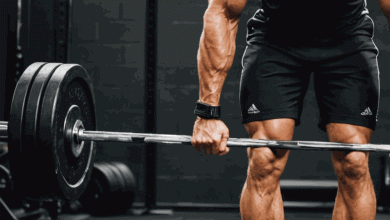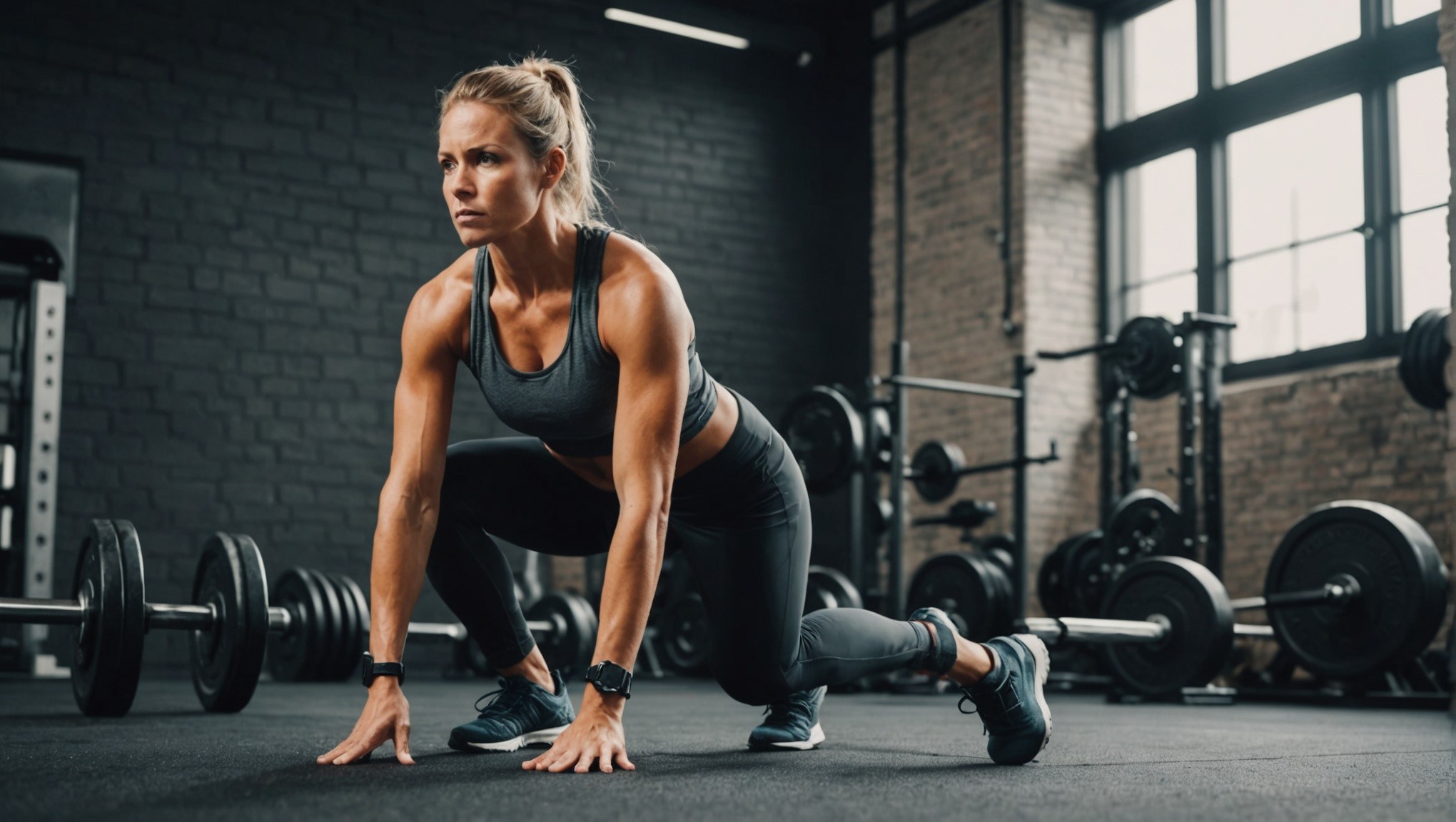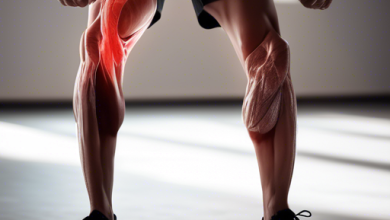Effective Leg Press for Glutes : Tips and Techniques


Understanding the Leg Press Machine
What is a Leg Press Machine?
The leg press machine is a popular piece of equipment in gyms, designed to target the lower body muscles, particularly the quadriceps, hamstrings, and glutes. With a platform for your feet and a backrest for support, the machine allows you to perform a pressing motion using your legs. This setup not only aids in muscle development but also reduces the strain on your back, making it an ideal choice for those looking to enhance their lower body strength without overloading the spine.
Available in various designs, the leg press machine can be categorized into three main types: the horizontal leg press, the vertical leg press, and the 45-degree leg press. Each type offers a unique angle of resistance, affecting how the muscles are engaged. Understanding these differences is crucial for selecting the machine that best suits your fitness goals.
How Does the Leg Press Work Your Glutes?
The leg press is an effective tool for glute development, primarily because it allows you to focus on this muscle group through controlled movements and adjustable resistance. As you press the weight away from your body, the glutes are activated along with the quadriceps and hamstrings. The key to maximizing glute activation lies in the positioning of your feet on the platform and the range of motion you utilize during the exercise.
By adjusting the angle and depth of your leg press, you can emphasize the glutes more than the other lower body muscles. This targeted approach not only aids in muscle growth but also contributes to better overall lower body strength and stability, essential for various athletic and everyday activities.
What Are the Benefits of Using the Leg Press Machine for Glute Development?
Utilizing the leg press machine offers several benefits for those aiming to enhance their glutes. One of the primary advantages is the ability to isolate and target the glute muscles with precision. This isolation allows for focused muscle engagement, leading to more effective muscle growth and toning over time. Additionally, the leg press machine provides a controlled environment to practice form and technique, reducing the risk of injury compared to free-weight exercises.
Another significant benefit is the machine’s versatility. By simply adjusting your foot position, you can alter the focus of the exercise, targeting different parts of the glute muscles. This adaptability makes the leg press a valuable tool for achieving balanced muscle development and preventing muscle imbalances that can lead to injury.
Setting Up the Leg Press Machine
How Do You Properly Adjust the Leg Press Machine?
Proper adjustment of the leg press machine is crucial for safe and effective workouts. Begin by adjusting the seat and backrest to ensure your knees are at a 90-degree angle when your feet are on the platform. This position ensures that your joints are not overly strained during the exercise, allowing for a full range of motion. Additionally, ensure that the backrest supports your spine comfortably, maintaining a neutral position throughout the movement.
Once the seat and backrest are set, adjust the safety pins or weight stoppers to accommodate your range of motion. This step is particularly important for preventing injury, as it ensures that the weight will not descend beyond your capacity to control it. By setting up the machine correctly, you create a foundation for effective glute-focused workouts.
What Foot Position Should You Use for Targeting the Glutes?
Foot placement on the leg press platform significantly influences which muscles are engaged during the exercise. To target the glutes effectively, position your feet higher on the platform. This placement shifts the focus from the quadriceps to the glutes and hamstrings, promoting greater activation of the glute muscles. Ensure that your feet are shoulder-width apart to maintain balance and stability throughout the movement.
Experimenting with slight variations in foot position can help you find the optimal setup for your body type and fitness goals. However, always prioritize comfort and stability to prevent unnecessary strain on your knees and lower back.
Why is Proper Body Alignment Important When Using the Leg Press?
Maintaining proper body alignment during leg press exercises is essential for both safety and effectiveness. Proper alignment ensures that the targeted muscles, particularly the glutes, are engaged correctly, minimizing the risk of injury. Align your hips and spine in a neutral position, avoiding any excessive arching or rounding of the back.
Proper alignment also allows for an efficient transfer of force from your legs to the machine, maximizing the effectiveness of each repetition. By focusing on alignment, you can enhance muscle engagement and achieve better results in your glute workouts.
Effective Techniques for Maximum Glute Activation
What Are the Best Techniques to Engage the Glutes During the Leg Press?
To maximize glute activation on the leg press machine, focus on engaging your glutes throughout the entire range of motion. Start by pressing through your heels rather than your toes, which encourages greater glute involvement. As you press the weight away, concentrate on squeezing your glutes, maintaining this tension as you return to the starting position.
Incorporating a controlled tempo into your leg press routine can further enhance glute activation. Slow, deliberate movements increase time under tension, promoting muscle growth and strength. This technique also allows for better focus on form, ensuring that the glutes are the primary muscle group being worked.
How Can You Incorporate Different Foot Placements to Target Glutes?
Varying your foot placement on the leg press platform can significantly alter which muscles are targeted during the exercise. For increased glute engagement, try positioning your feet wider apart. This adjustment emphasizes the glutes and inner thighs, providing a more comprehensive lower body workout.
Alternatively, you can experiment with unilateral leg presses, where one foot is placed slightly forward on the platform. This variation challenges the glutes to stabilize and control the movement, enhancing muscle activation and balance. By incorporating different foot placements, you can keep your workouts dynamic and continuously challenge your glutes.
What Range of Motion Should You Aim for During Your Leg Press?
A full range of motion is essential for maximizing glute engagement during leg press exercises. Aim to lower the weight until your knees are at a 90-degree angle or slightly beyond, ensuring that the glutes are fully activated throughout the movement. Avoid locking your knees at the top of the press, as this can reduce tension on the glutes and increase the risk of injury.
Adjust the machine settings to accommodate your flexibility and strength levels, allowing for a controlled and effective range of motion. By consistently challenging your glutes with a full range of motion, you can promote muscle growth and enhance overall lower body strength.
Common Mistakes to Avoid on the Leg Press Machine
What Are the Most Common Mistakes When Using the Leg Press for Glutes?
One of the most common mistakes when using the leg press for glutes is improper foot placement. Placing the feet too low on the platform can shift the focus from the glutes to the quadriceps, reducing the effectiveness of the exercise. Additionally, failing to maintain proper alignment can lead to strain on the knees and lower back, increasing the risk of injury.
Another frequent mistake is relying on momentum rather than controlled movements. Fast, jerky motions can decrease muscle engagement and limit the benefits of the exercise. Focus on slow, deliberate movements to maximize glute activation and prevent unnecessary strain on the joints.
How Can Poor Form Affect Your Results and Lead to Injury?
Poor form on the leg press machine can significantly impact your results and increase the risk of injury. Misalignment of the spine or hips can lead to strain on the lower back, while improper foot placement can cause knee pain and reduce glute engagement. These issues not only hinder progress but can also lead to long-term injuries that may require extensive recovery.
By prioritizing proper form and technique, you can ensure that the targeted muscles are engaged effectively, promoting muscle growth and strength. Regularly reviewing and adjusting your form can help prevent injuries and enhance the overall effectiveness of your leg press workouts.
Why Should You Avoid Overloading the Machine?
Overloading the leg press machine with excessive weight can compromise your form and increase the risk of injury. While it may be tempting to lift heavier weights, especially if you’re aiming for muscle growth, it’s crucial to prioritize technique over load. Excessive weight can lead to improper form, such as rounding the back or locking the knees, which can result in strain or injury.
Instead of focusing solely on weight, aim to perform controlled, high-quality repetitions with a weight that challenges you while allowing for proper form. This approach promotes effective muscle engagement and reduces the risk of injury, leading to better long-term results.
Integrating the Leg Press into Your Workout Routine
How Often Should You Use the Leg Press for Optimal Glute Gains?
To achieve optimal glute gains, incorporating the leg press into your workout routine two to three times a week is recommended. This frequency allows for adequate recovery time between sessions, ensuring that the muscles have time to repair and grow stronger. It’s important to listen to your body and adjust the frequency based on your individual recovery needs and fitness goals.
By combining the leg press with other lower body exercises, you can create a balanced routine that targets all areas of the glutes. This approach not only enhances muscle growth but also promotes overall lower body strength and stability.
What Other Exercises Should You Pair with the Leg Press for Balanced Glute Workouts?
To achieve balanced glute workouts, consider pairing the leg press with complementary exercises such as squats, lunges, and deadlifts. These compound movements target different parts of the glutes, promoting comprehensive muscle development and strength. Additionally, incorporating exercises like hip thrusts and glute bridges can further enhance glute activation and growth.
By varying your exercises and incorporating different movement patterns, you can prevent muscle imbalances and ensure that all areas of the glutes are effectively targeted. This approach promotes balanced muscle growth and reduces the risk of injury.
How Can You Track Your Progress on the Leg Press Machine?
Tracking your progress on the leg press machine is essential for monitoring improvements and adjusting your workout routine as needed. Keep a record of the weight, repetitions, and sets you perform during each session, noting any changes or advancements over time. This information can help you identify patterns in your progress and make informed decisions about when to increase weight or adjust your routine.
Additionally, consider tracking other metrics such as muscle growth, strength improvements, and overall fitness goals. Regularly reviewing your progress can help you stay motivated and focused on achieving your desired results.
Conclusion: Making the Most of Your Leg Press Workouts
What Key Takeaways Should You Remember When Using the Leg Press?
When using the leg press machine, remember the importance of proper form and technique. Prioritize foot placement and body alignment to maximize glute engagement and reduce the risk of injury. Focus on controlled movements and avoid overloading the machine to ensure effective muscle activation and growth.
Incorporate a variety of exercises and foot placements into your routine to target all areas of the glutes and promote balanced muscle development. By following these guidelines, you can enhance your workouts and achieve your fitness goals effectively and safely.
How Can You Stay Motivated to Master the Leg Press for Glute Training?
Staying motivated to master the leg press for glute training involves setting clear, achievable goals and regularly tracking your progress. Celebrate small victories and improvements, and use them as motivation to continue pushing yourself in your workouts. Additionally, consider working with a fitness professional or joining a workout group for added support and accountability.
Remember that consistency is key to achieving your fitness goals. By maintaining a regular workout routine and staying committed to your training, you can master the leg press and experience significant improvements in your glute strength and overall fitness.
- Understand the different types of leg press machines and their benefits for glute development.
- Properly adjust the leg press machine for safe and effective workouts.
- Focus on foot placement and body alignment to maximize glute activation.
- Avoid common mistakes such as improper form and overloading the machine.
- Incorporate complementary exercises for balanced glute workouts.
- Regularly track your progress to stay motivated and achieve your fitness goals.


